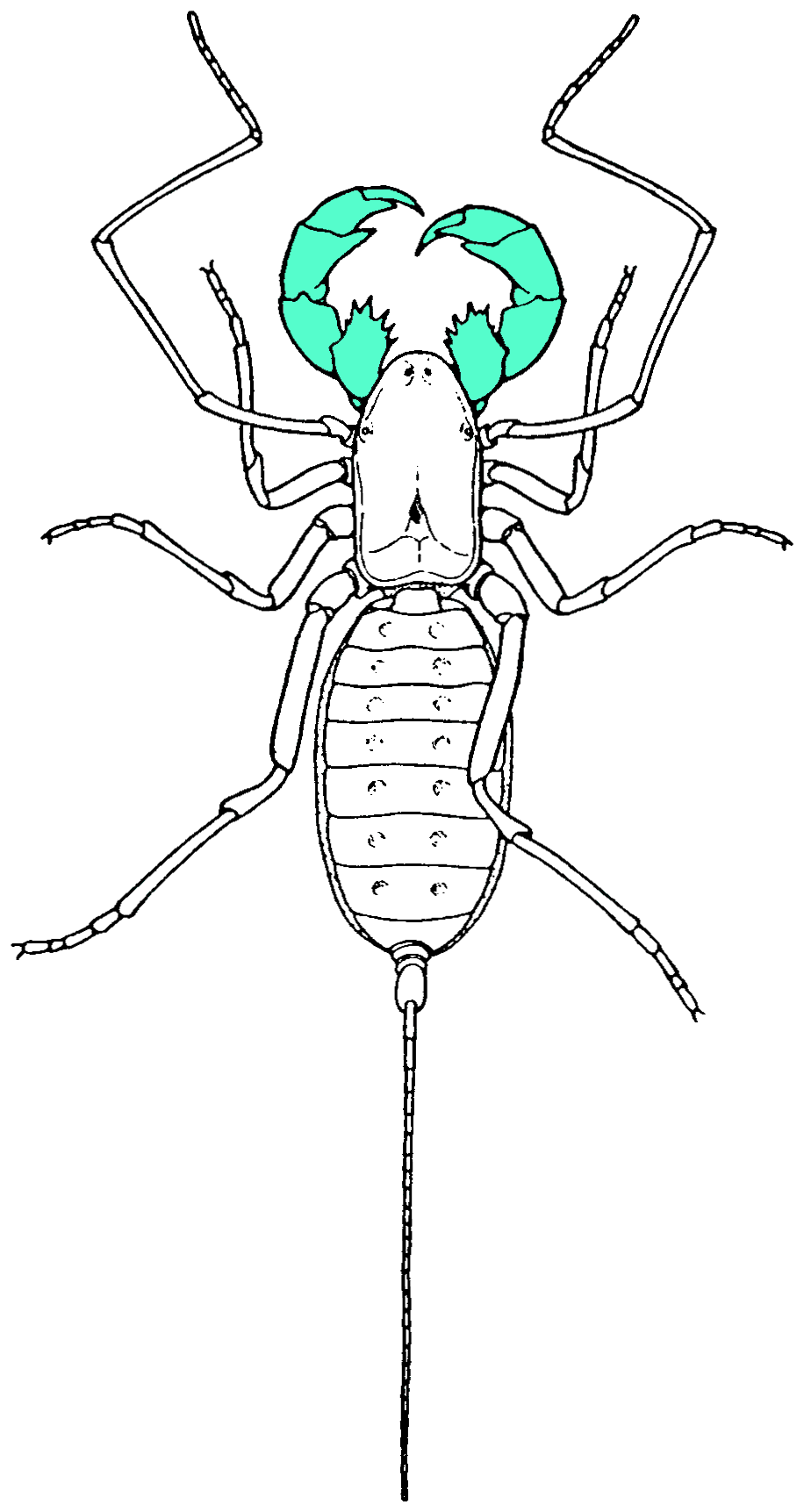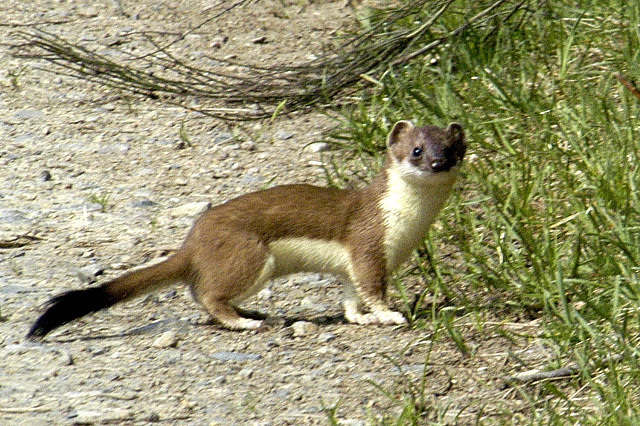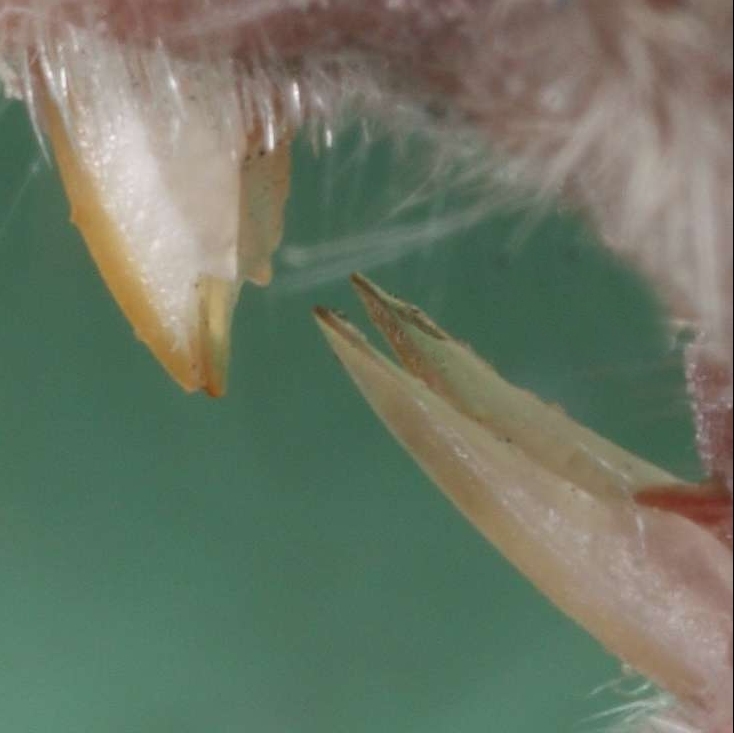|
Anderus
''Anderus'' is a genus of forest insects in the family Anostostomatidae (wētā). All ''Anderus'' species are nocturnal, and hide in burrows during the day. In New Zealand they are known as ground wētā due to their burrowing lifestyle. Ground wētā adults are smaller than other types of wētā, and females of all ''Anderus'' species have long ovipositors. Taxonomy The genus ''Anderus'' was named for the Swedish entomologist Kjell Ander in 2024. Six species previously in the genus ''Hemiandrus'' were shown to be sister the Australian winged species ''Transaevum laudatum'', based on analysis of DNA sequences. In the genus ''Anderus'' there are six described species and at least one undescribed species from Rakiura/Stewart Island. Morphology The genus ''Anderus'' includes the smallest wētā species, with adult individual body size no more than 7 millimetres, and weighing less than a gram. These wētā have no tympanum, and instead are able to detect sound through their ... [...More Info...] [...Related Items...] OR: [Wikipedia] [Google] [Baidu] |
Hemiandrus
''Hemiandrus'' is a genus of wētā in the family (biology), family Anostostomatidae. In New Zealand they are known as ground wētā due to their burrowing lifestyle. ''Hemiandrus'' wētā are nocturnal, and reside in these burrows during the day. Ground wētā seal the entrance of their burrow during the day with a soil plug or door so that their burrow is concealed. Ground wētā adults are smaller than other types of wētā, with the unusual trait of having either long or short ovipositors, depending on the species. The name of this genus comes from this trait as ''hemi''- mean half and -''andrus'' means male, as the species where the female has a short ovipositor can sometimes be mistaken for a male. This genus has a diverse diet, depending on the species. Taxonomy The genus ''Hemiandrus'' was originally described by Kjell Ernst Viktor Ander, Kjell Ander in 1938. In 2024 a new genus was created (''Anderus'') reducing ''Hemiandrus'' to eleven described species. ''Hemiand ... [...More Info...] [...Related Items...] OR: [Wikipedia] [Google] [Baidu] |
Hemiandrus Brucei
''Anderus brucei'' is a species of ground wētā in the family Anostostomatidae endemic to New Zealand. These insects are nocturnal and found in forests in the North Island and northern South Island. Taxonomy Previously encompassed under '' Hemiandrus maculifrons'', ''A. brucei'' is similar in appearance but genetically distinct. This species was moved to the genus ''Anderus'' in 2024 when genetic data showed the species within ''Hemiandrus'' were not monophyletic. ''Anderus brucei'' is named in memory of Briar Taylor-Smith's grandfather, Bruce Edwin Smith. Habitat and distribution ''Anderus brucei'' is found in native forests in the North Island and northern South Island of New Zealand and is often sympatric with other wētā species. Having such a broad range is uncharacteristic of most ground wētā, which are often endemic to very small areas. Morphology ''Anderus brucei'' has a high level of morphological variation. The head and body of ''A. brucei'' is mostly brown ... [...More Info...] [...Related Items...] OR: [Wikipedia] [Google] [Baidu] |
Anostostomatidae
Anostostomatidae is a family of insects in the order Orthoptera, widely distributed in the southern hemisphere. It is named Mimnermidae or Henicidae in some taxonomies, and common names include ''king crickets'' in Australia and South Africa, and ''wētā'' in New Zealand (although not all wētā are in Anostostomatidae). Prominent members include the Parktown prawn of South Africa, and the giant wētā of New Zealand. General characteristics Some members of this family can be quite large: Parktown prawn can exceed 6 cm and tree weta can exceed 8 cm in length. Some Australian and Asian anostostomatids have wings (e.g. '' Exogryllacris'', '' Gryllotaurus'', '' Transaevum''), while most lack wings (e.g. '' Anostostoma'', '' Hypocophoides'', '' Penalva''). Males of some species have highly modified heads, which they use in male-male conflicts. Diet The wētā of New Zealand, such as '' Hemideina'', are mostly herbivores that feed on leaves, fruit and flowers, but ... [...More Info...] [...Related Items...] OR: [Wikipedia] [Google] [Baidu] |
Wētā
Wētā (also spelled weta in English) is the common name for a group of about 100 insect species in the families Anostostomatidae and Rhaphidophoridae endemism, endemic to New Zealand. They are giant wingless insect, flightless cricket (insect), crickets, and some are among the List of largest insects, heaviest insects in the world. Generally nocturnality, nocturnal, most small species are carnivores and scavengers while the larger species are herbivore, herbivorous. Although some List of endemic birds of New Zealand, endemic birds (and tuatara) likely prey on them, wētā are disproportionately preyed upon by introduced mammals, and some species are now critically endangered. Name Wētā is a loanword, from the Māori language, Māori-language word , which refers to this whole group of large insects; some types of wētā have a specific Māori name. In New Zealand English, it is spelled either "weta" or "wētā". The form with Macron (diacritic), macrons is increasingly com ... [...More Info...] [...Related Items...] OR: [Wikipedia] [Google] [Baidu] |
Kiwi (bird)
Kiwi are flightless birds endemism, endemic to New Zealand of the Order (biology), order Apterygiformes. The five extant species fall into the family Apterygidae and genus ''Apteryx''. Approximately the size of a domestic chicken, kiwi are the smallest ratites (which also include ostriches, emus, rhea (bird), rheas, cassowary, cassowaries and the extinct elephant birds and moa). DNA sequence comparisons have yielded the conclusion that kiwi are much more closely related to the extinct Malagasy elephant birds than to the moa with which they shared New Zealand. There are five recognised species, four of which are currently listed as Vulnerable species, vulnerable, and Little spotted kiwi, one of which is Near-threatened species, near threatened. All species have been negatively affected by historic Deforestation in New Zealand, deforestation, but their remaining habitat is well protected in large forest reserves and national parks. At present, the greatest threat to their surviva ... [...More Info...] [...Related Items...] OR: [Wikipedia] [Google] [Baidu] |
Seta
In biology, setae (; seta ; ) are any of a number of different bristle- or hair-like structures on living organisms. Animal setae Protostomes Depending partly on their form and function, protostome setae may be called macrotrichia, chaetae, Scale (insect anatomy), scales, or Common name, informally, hairs. The setal membrane is not Cuticle, cuticularized, so movement is possible. Annelid setae are stiff bristles present on the body. They allow earthworms and their relatives to attach to the surface and prevent backsliding during peristaltic motion. These hairs make it difficult to pull a worm straight from the ground. Setae in oligochaetes (the group including earthworms) are largely composed of chitin. They are classified according to the limb to which they are attached; for instance, notosetae are attached to notopodia; neurosetae to neuropodia. The setae on polychaete worms are referred to as chaeta due to their differing morphology. Crustaceans have mechano- and chemos ... [...More Info...] [...Related Items...] OR: [Wikipedia] [Google] [Baidu] |
Pedipalp
Pedipalps (commonly shortened to palps or palpi) are the secondary pair of forward appendages among Chelicerata, chelicerates – a group of arthropods including spiders, scorpions, horseshoe crabs, and sea spiders. The pedipalps are lateral to the chelicerae ("jaws") and anterior to the first pair of walking legs. Overview Pedipalps are composed of six segments or articles. From the proximal end (where they are attached to the body) to the distal, they are: the coxa, the Arthropod leg#Trochanter, trochanter, the Arthropod leg#Femur, femur, the short Glossary_of_spider_terms#patella, patella, the Glossary_of_spider_terms#tibia, tibia, and the Arthropod_leg#Tarsus, tarsus. In spiders, the coxae frequently have extensions called Glossary_of_spider_terms#maxilla , maxillae or gnathobases, which function as mouth parts with or without some contribution from the coxae of the anterior arthropod leg, legs. The limbs themselves may be simple tactile organs outwardly resembling the legs ... [...More Info...] [...Related Items...] OR: [Wikipedia] [Google] [Baidu] |
Carnivorous
A carnivore , or meat-eater (Latin, ''caro'', genitive ''carnis'', meaning meat or "flesh" and ''vorare'' meaning "to devour"), is an animal or plant whose nutrition and energy requirements are met by consumption of animal tissues (mainly muscle, fat and other soft tissues) as food, whether through predation or scavenging. Nomenclature Mammal order The technical term for mammals in the order Carnivora is ''carnivoran'', and they are so-named because most member species in the group have a carnivorous diet, but the similarity of the name of the order and the name of the diet causes confusion. Many but not all carnivorans are meat eaters; a few, such as the large and small cats (Felidae) are ''obligate'' carnivores (see below). Other classes of carnivore are highly variable. The ursids (bears), for example: while the Arctic polar bear eats meat almost exclusively (more than 90% of its diet is meat), almost all other bear species are omnivorous, and one species, the gia ... [...More Info...] [...Related Items...] OR: [Wikipedia] [Google] [Baidu] |
Arthropod Cuticle
A cuticle (), or cuticula, is any of a variety of tough but flexible, non-mineral outer coverings of an organism, or parts of an organism, that provide protection. Various types of "cuticle" are non-homology (biology), homologous, differing in their origin, structure, function, and chemical composition. Human anatomy In human anatomy, "cuticle" can refer to several structures, but it is used in general parlance, and even by medical professionals, to refer to the thickened layer of skin surrounding fingernails and toenails (the eponychium), and to refer to the superficial layer of overlapping cells covering the hair shaft (Cuticle (hair), cuticula pili), consisting of dead cells, that locks the hair into its hair follicle, follicle. It can also be used as a synonym for the Epidermis (skin), epidermis, the outer layer of skin. Cuticle of invertebrates In zoology, the invertebrate cuticle or cuticula is a multi-layered structure outside the epidermis (skin), epidermis of many ... [...More Info...] [...Related Items...] OR: [Wikipedia] [Google] [Baidu] |
Stoat In New Zealand
The stoat (''Mustela erminea'') was introduced species, introduced into New Zealand to control introduced rabbits and hares, but is now a major threat to the native bird population. The natural range of the stoat is limited to parts of the Northern Hemisphere. Immediately before human settlement, New Zealand did not have any land-based mammals apart from bats, but Polynesians, Polynesian and European settlers introduced a wide variety of animals. Rarely, in Southland, New Zealand, Southland, the fur of stoats has been reported to turn white, being the fur known as ermine, which adorns royal robes. Introductions of stoats The rabbit was introduced by European settlers as a food and game animal, and by the 1870s it was becoming a serious threat to the newly developed farming economy. Farmers began demanding the introduction of mustelids (including stoats) to control the rabbit plague. Warnings about the dangers to bird life from stoats were given by scientists in New Zealand and ... [...More Info...] [...Related Items...] OR: [Wikipedia] [Google] [Baidu] |
Mus Musculus
The house mouse (''Mus musculus'') is a small mammal of the rodent family Muridae, characteristically having a pointed snout, large rounded ears, and a long and almost hairless tail. It is one of the most abundant species of the genus ''Mus (genus), Mus''. Although a wild animal, the house mouse has benefited significantly from associating with human habitation to the point that truly wild populations are significantly less common than the synanthropic populations near human activity. The house mouse has been domestication, domesticated as the pet or fancy mouse, and as the laboratory mouse, which is one of the most important model organisms in biology and medicine. The complete mouse reference genome was Whole genome sequencing, sequenced in 2002. Characteristics House mice have an adult body length (nose to base of tail) of and a tail length of . The weight is typically . In the wild they vary in color from grey and light brown to black (individual hairs are actually Agouti ... [...More Info...] [...Related Items...] OR: [Wikipedia] [Google] [Baidu] |
Sound
In physics, sound is a vibration that propagates as an acoustic wave through a transmission medium such as a gas, liquid or solid. In human physiology and psychology, sound is the ''reception'' of such waves and their ''perception'' by the brain. Only acoustic waves that have frequency, frequencies lying between about 20 Hz and 20 kHz, the audio frequency range, elicit an auditory percept in humans. In air at atmospheric pressure, these represent sound waves with wavelengths of to . Sound waves above 20 kHz are known as ultrasound and are not audible to humans. Sound waves below 20 Hz are known as infrasound. Different animal species have varying hearing ranges, allowing some to even hear ultrasounds. Definition Sound is defined as "(a) Oscillation in pressure, stress, particle displacement, particle velocity, etc., propagated in a medium with internal forces (e.g., elastic or viscous), or the superposition of such propagated oscillation. (b) Auditory sen ... [...More Info...] [...Related Items...] OR: [Wikipedia] [Google] [Baidu] |









